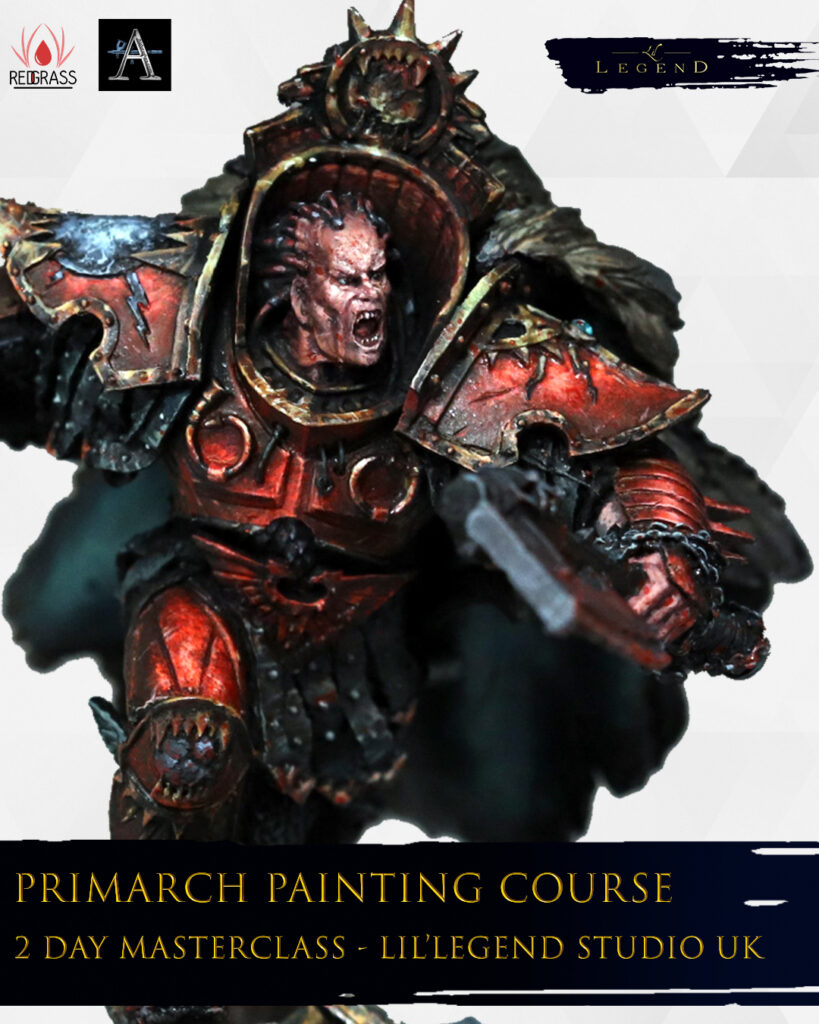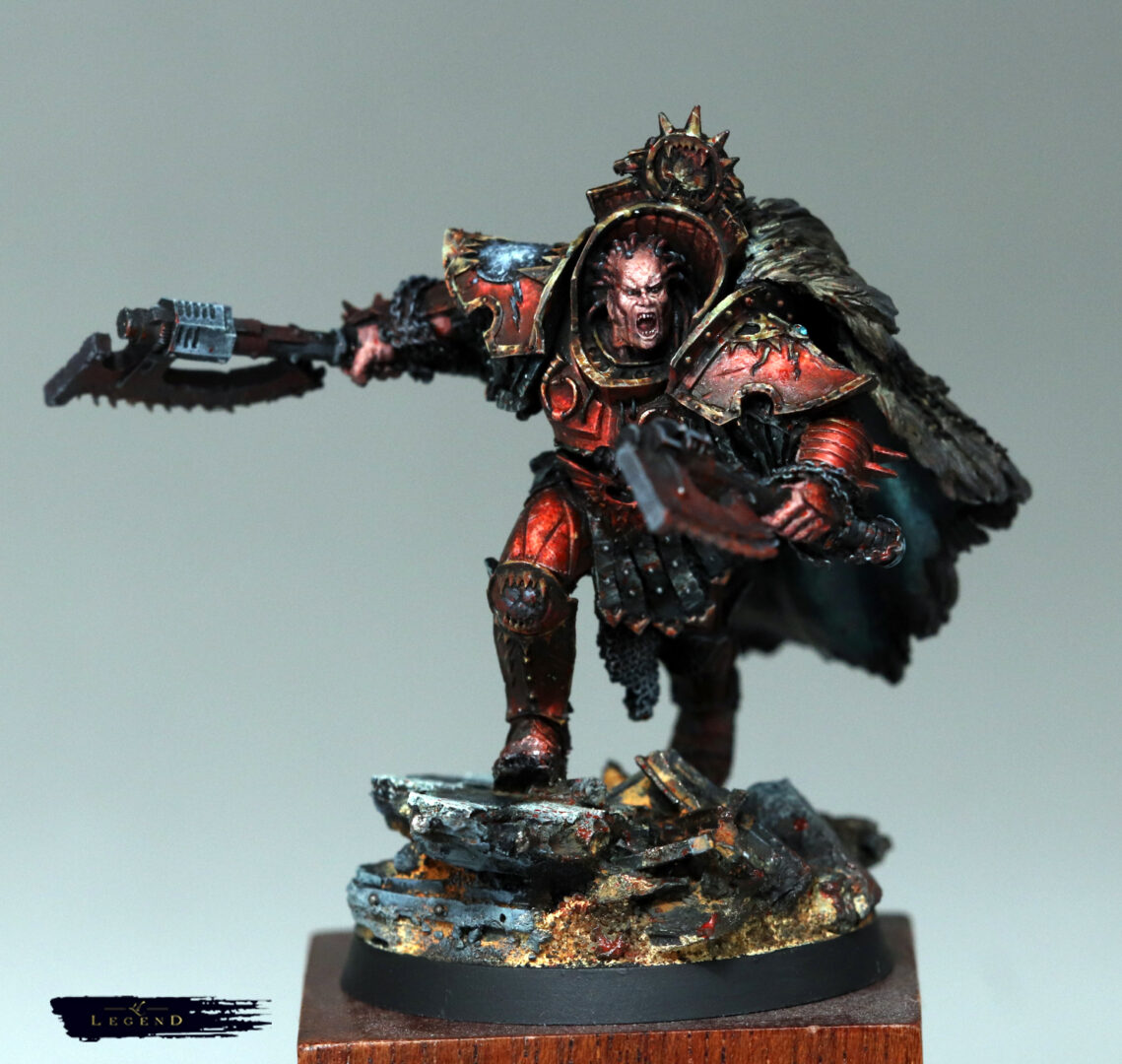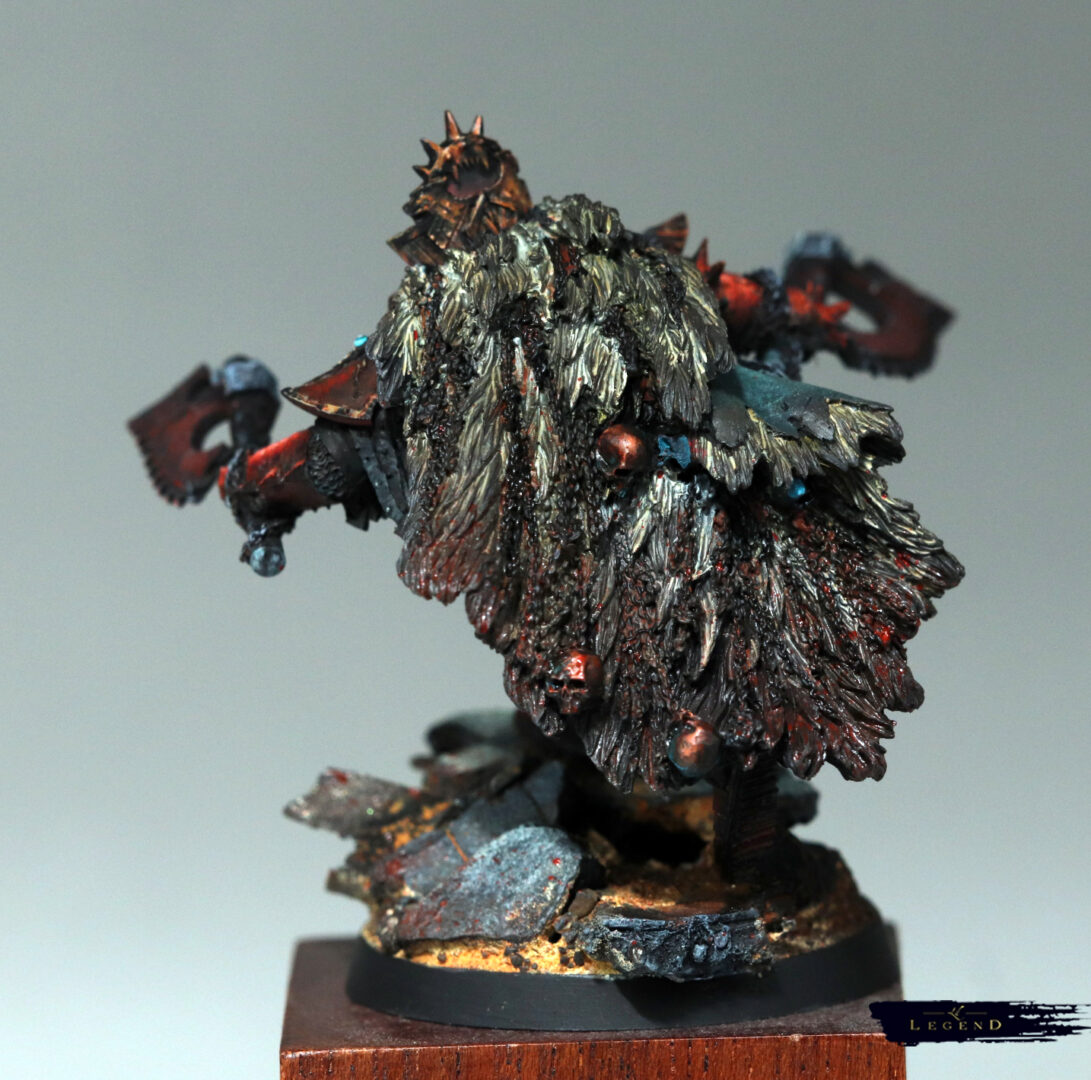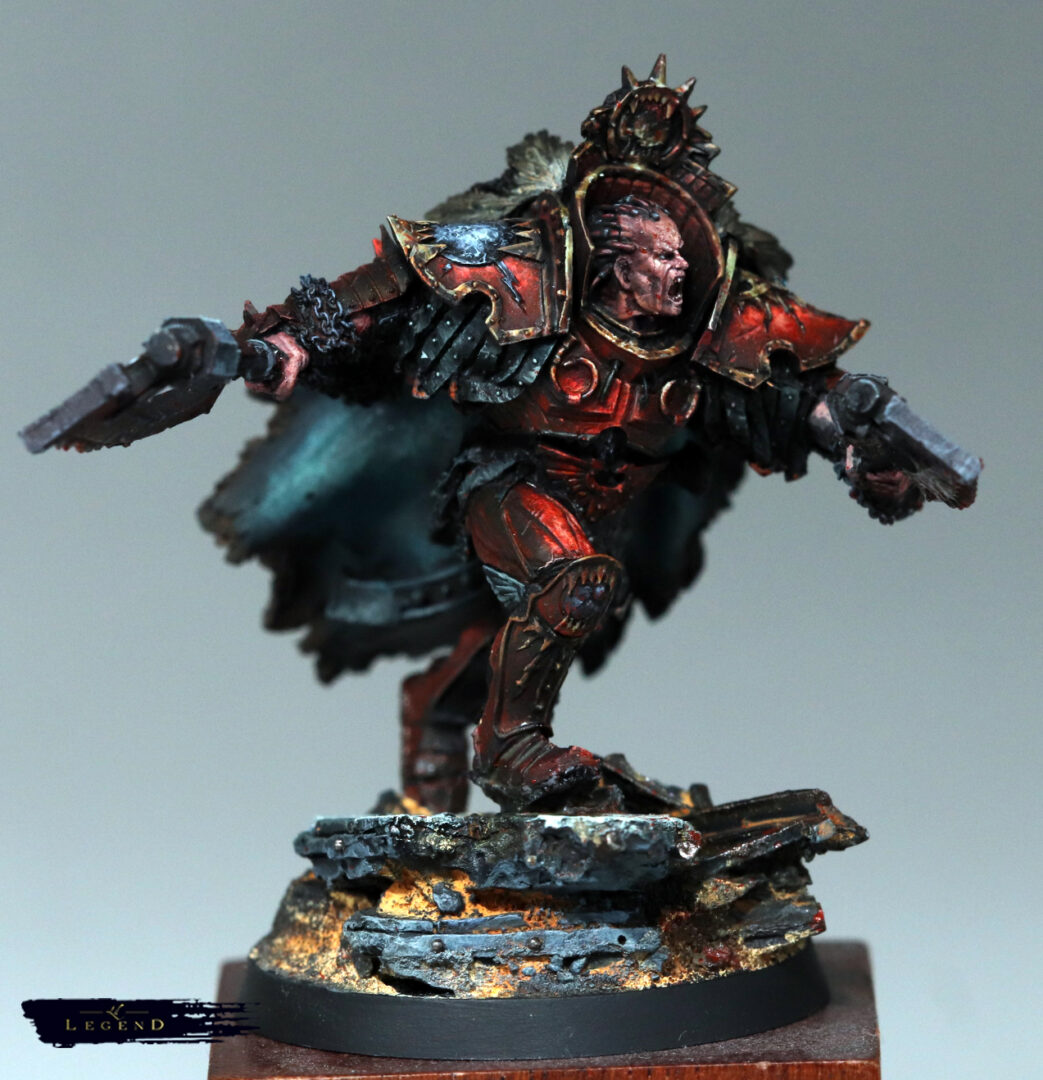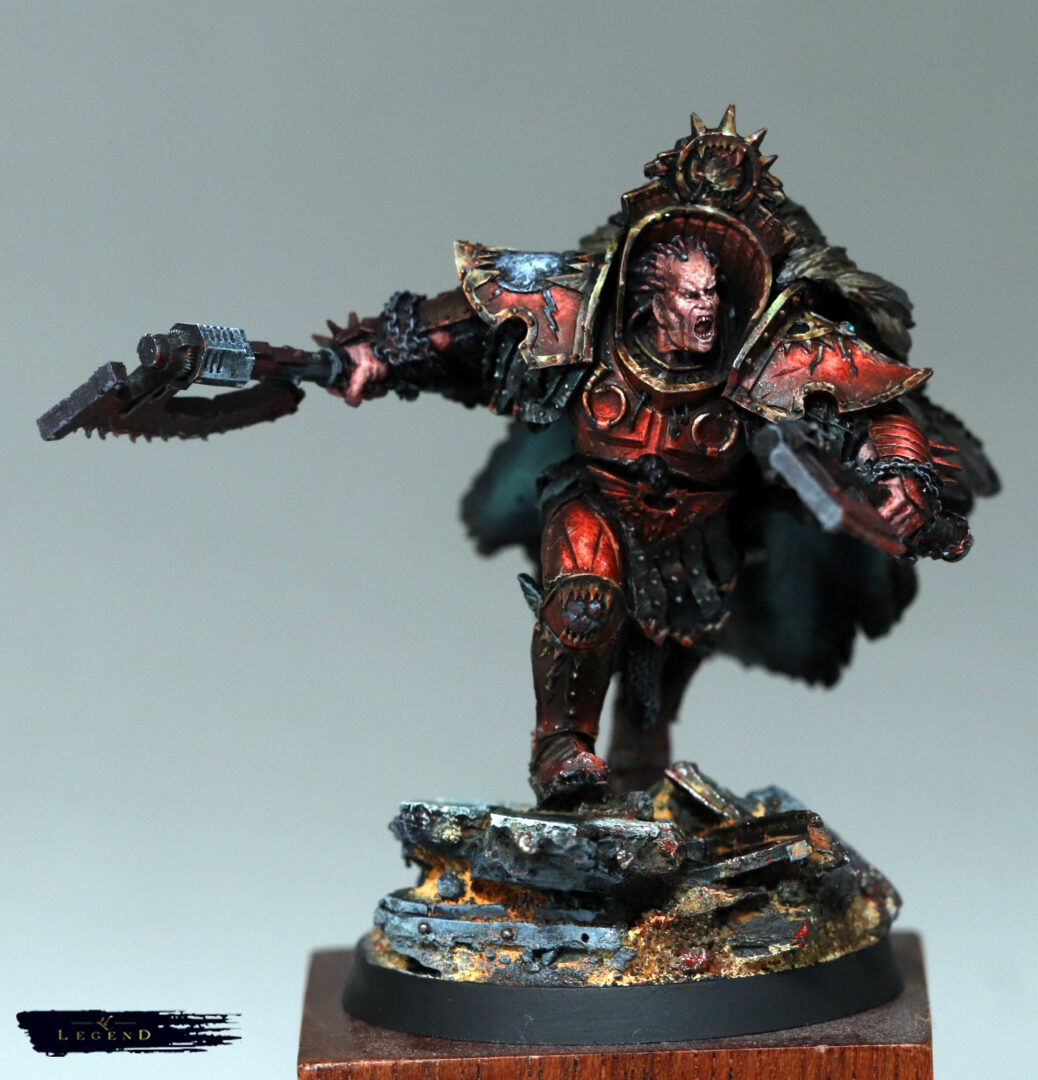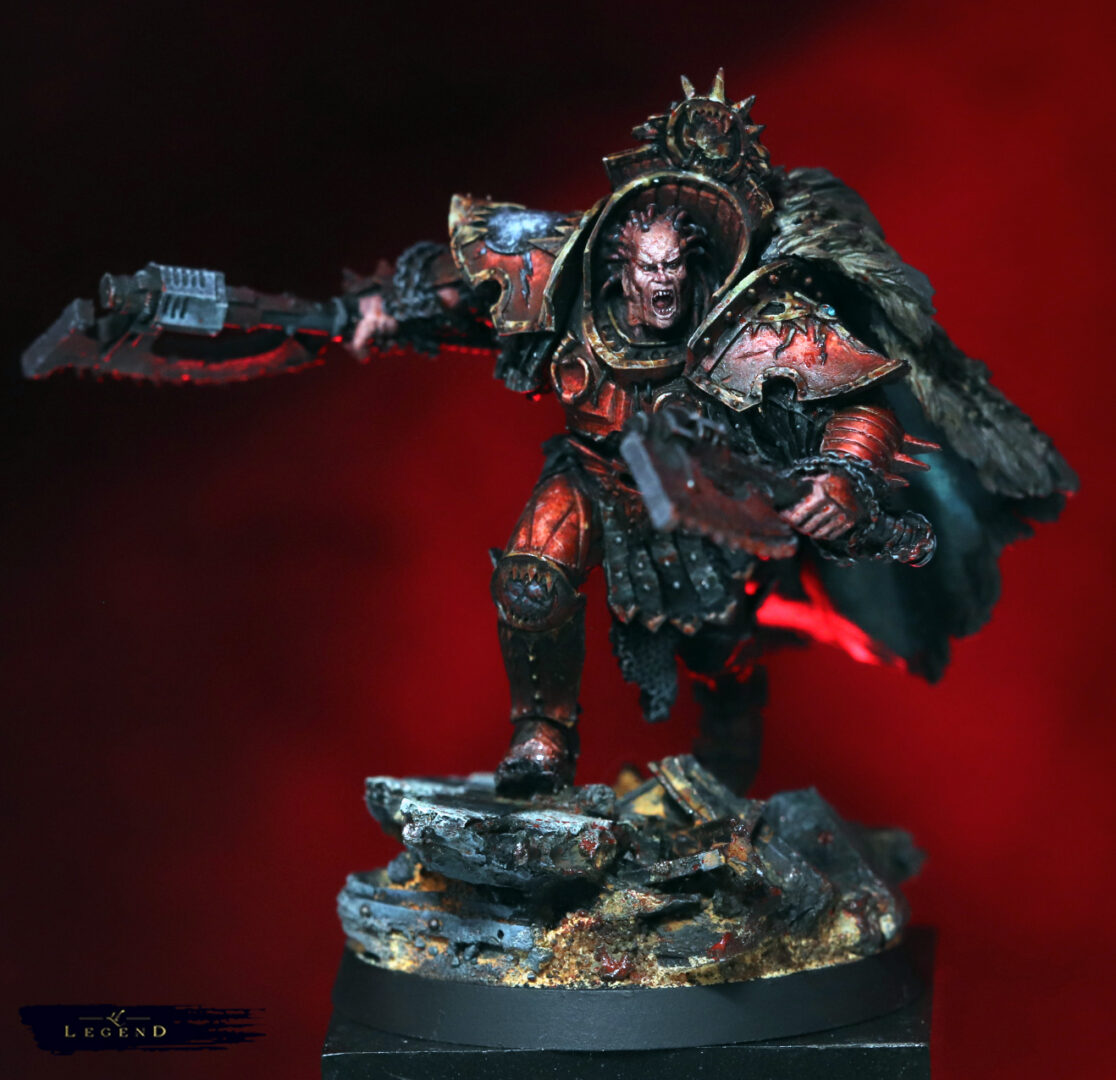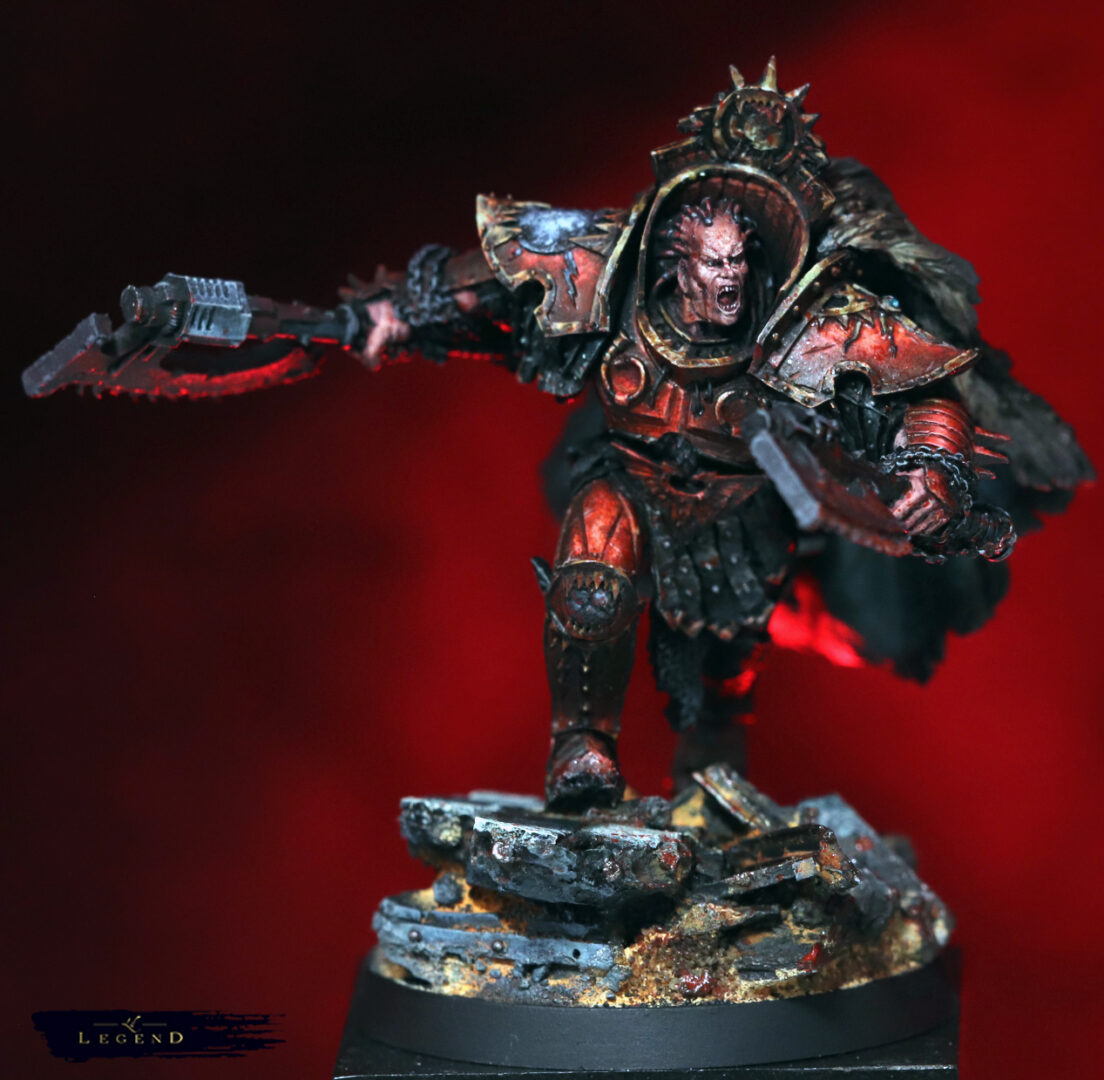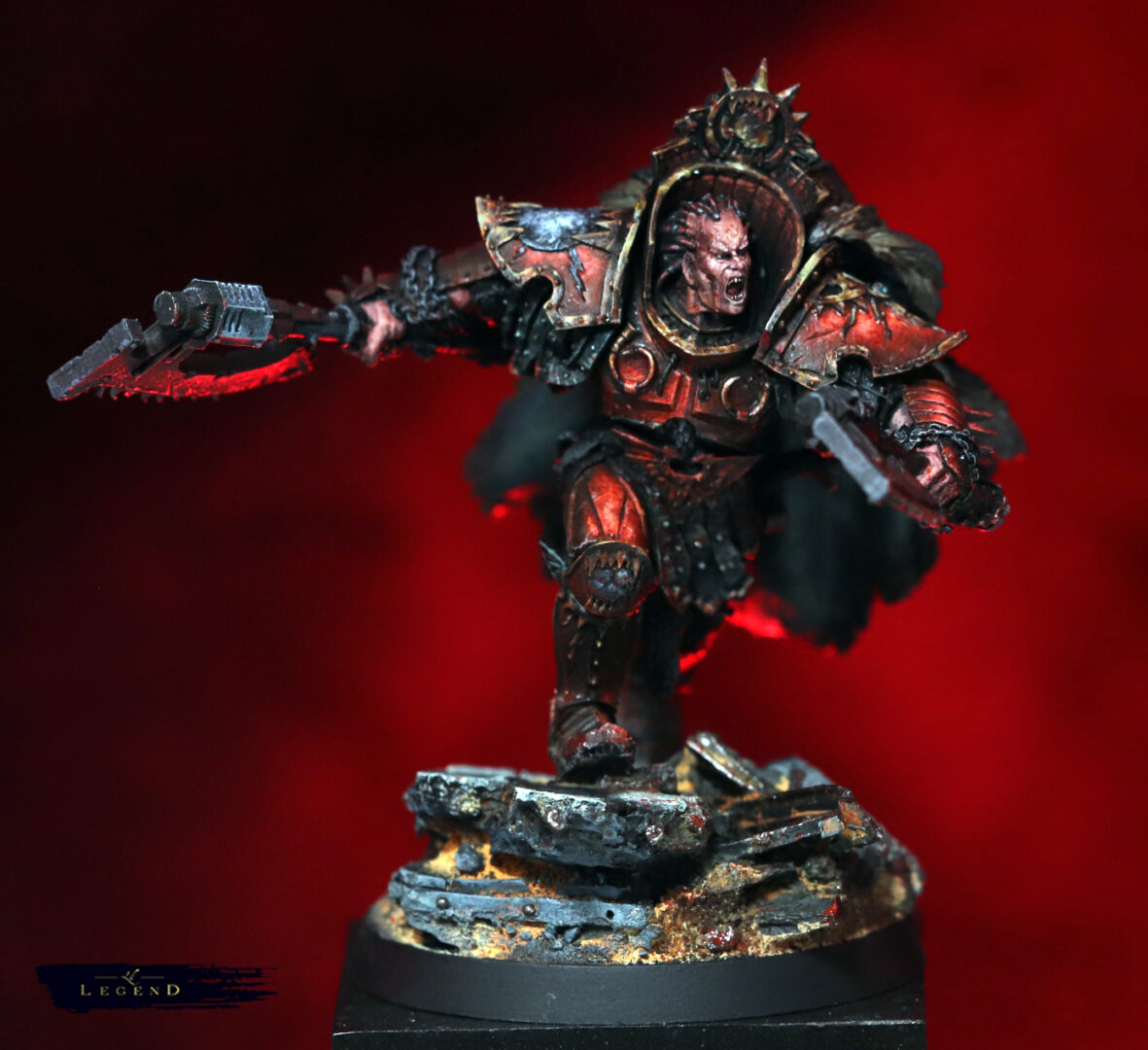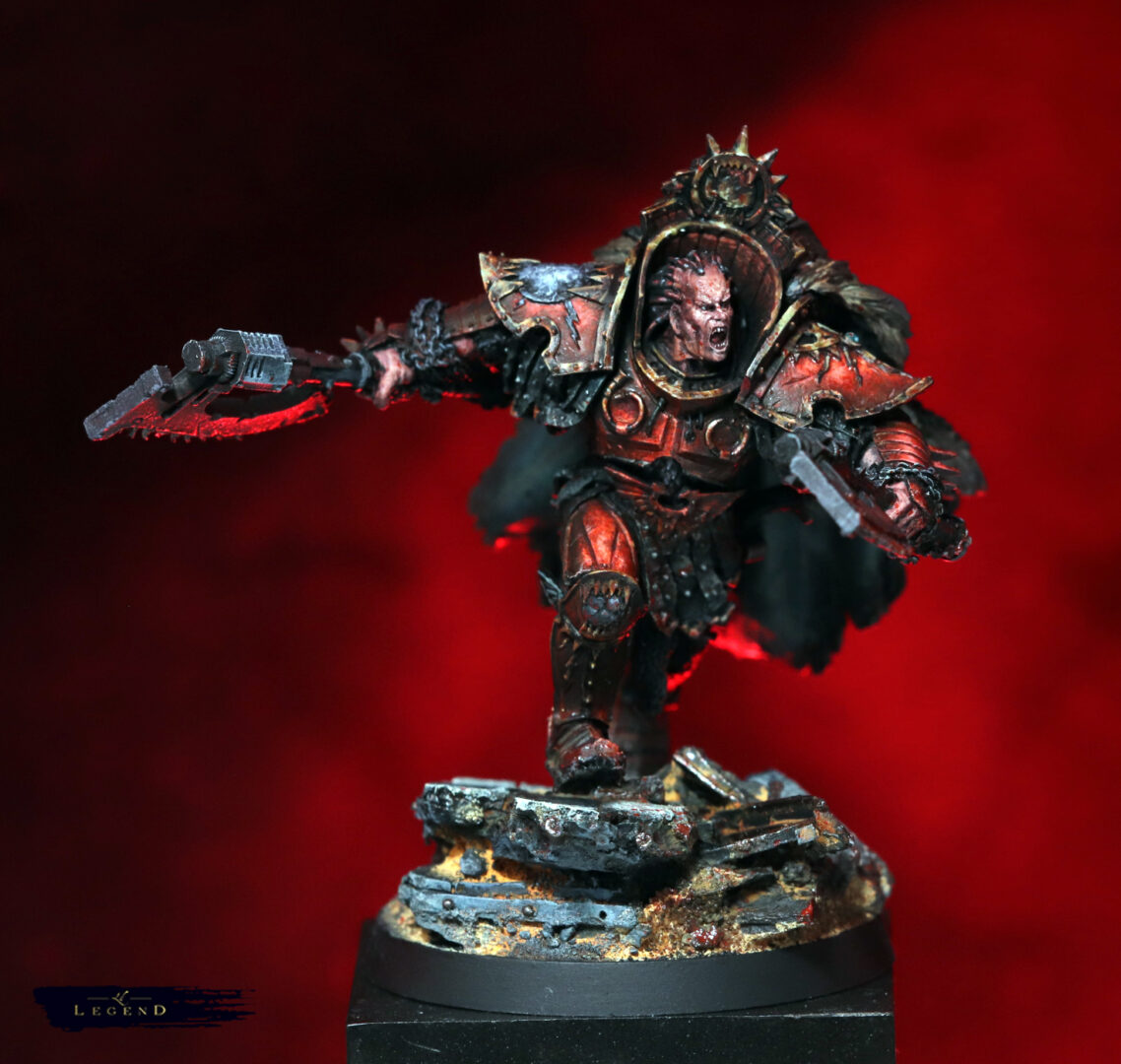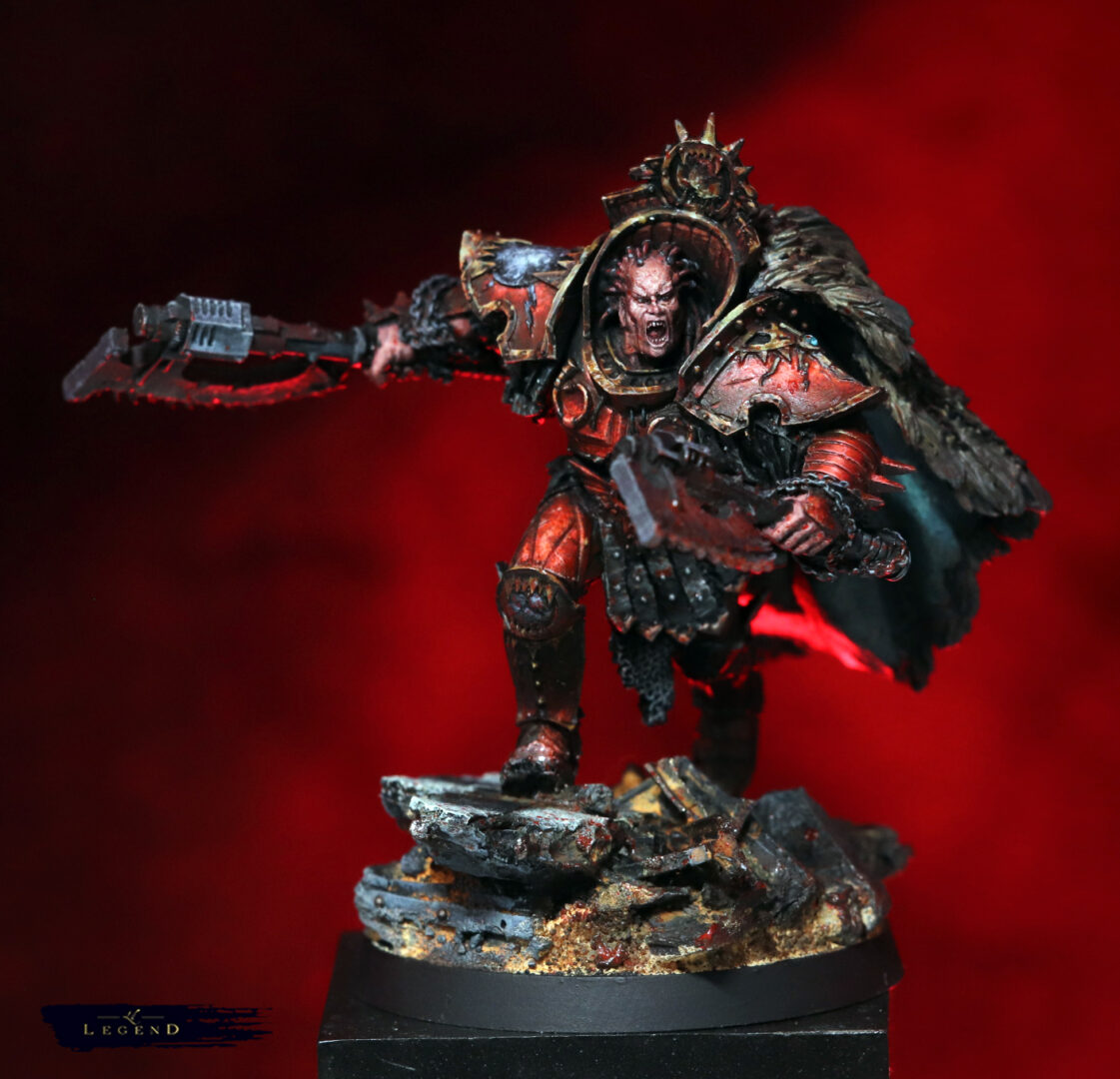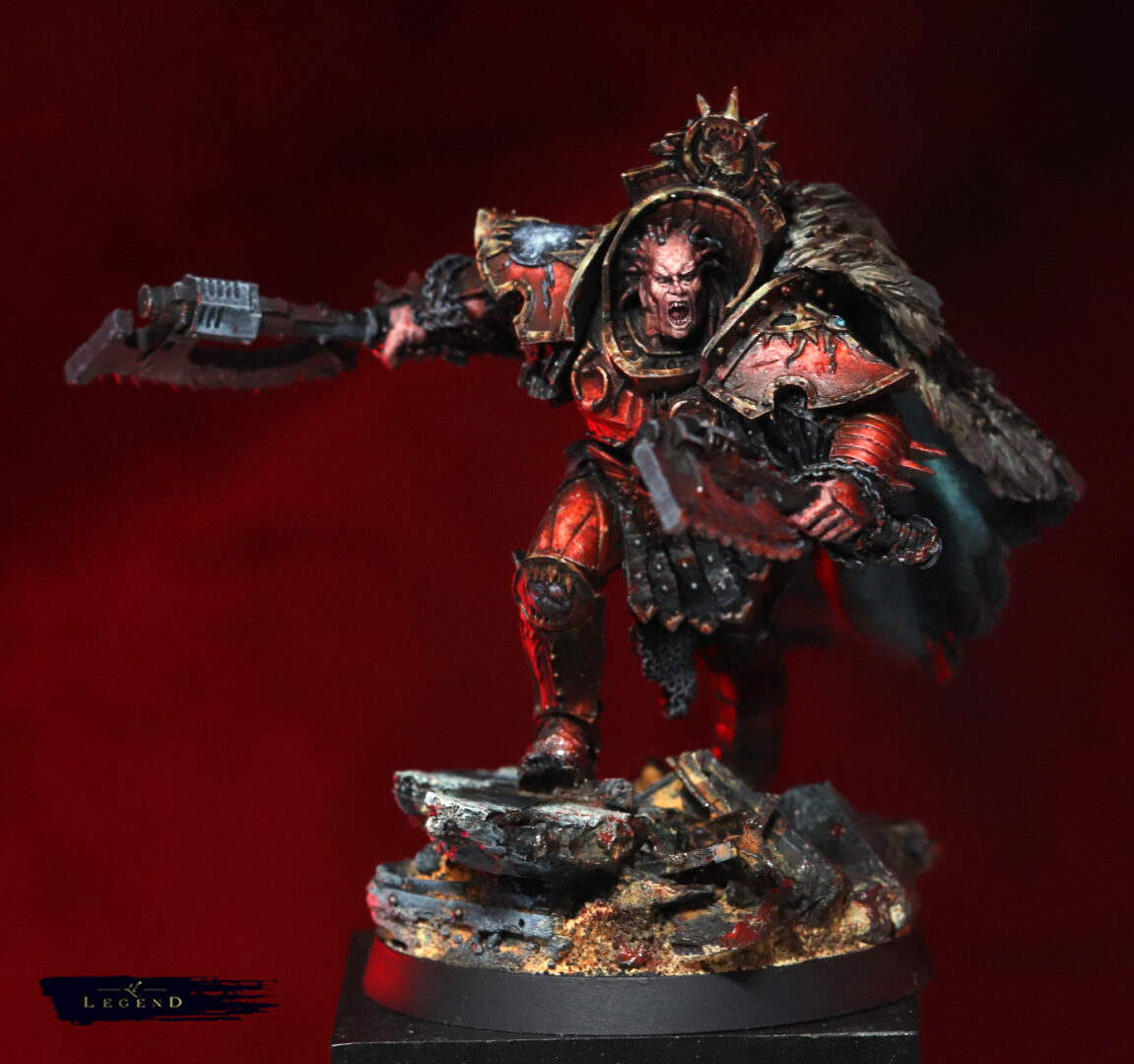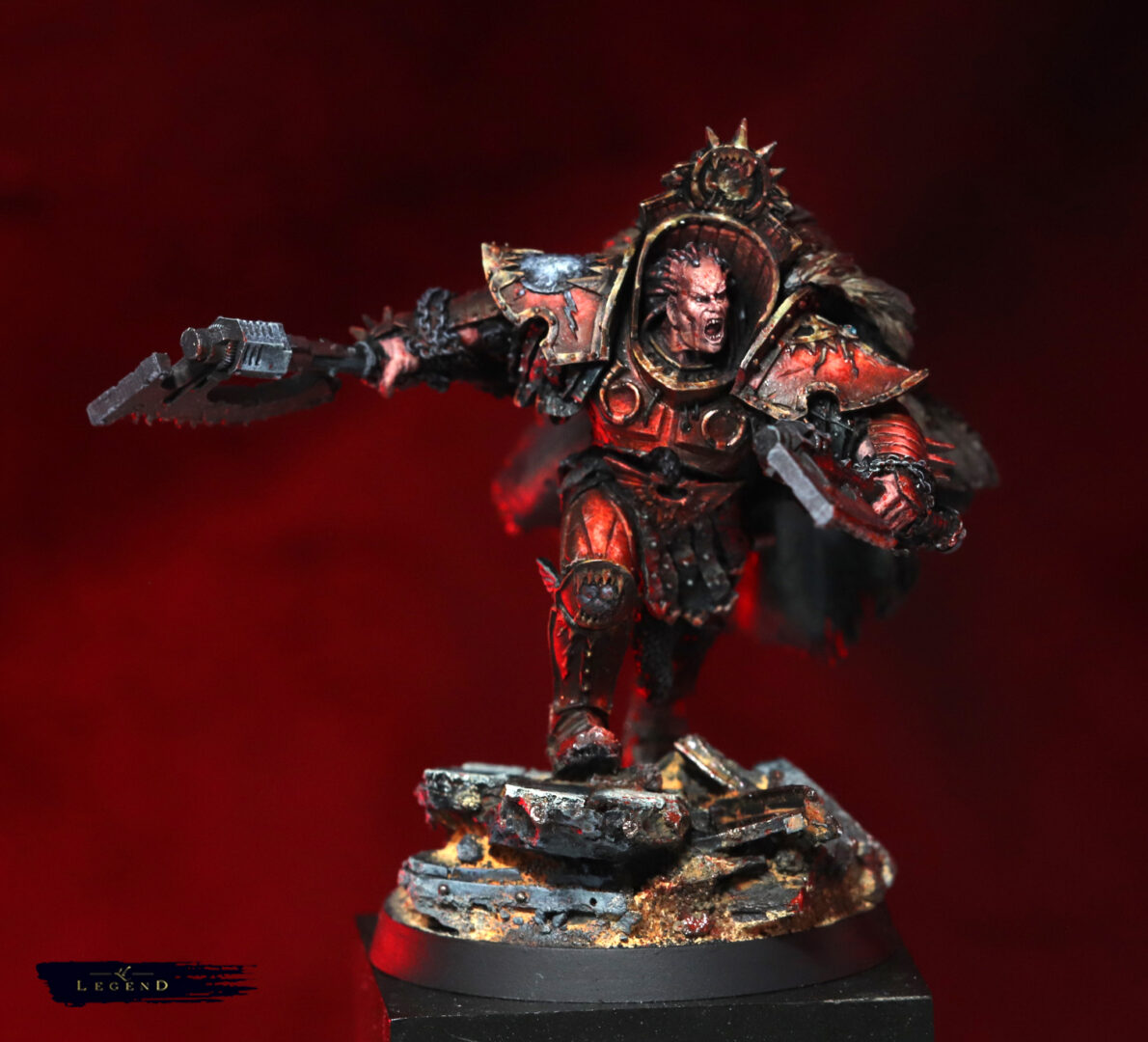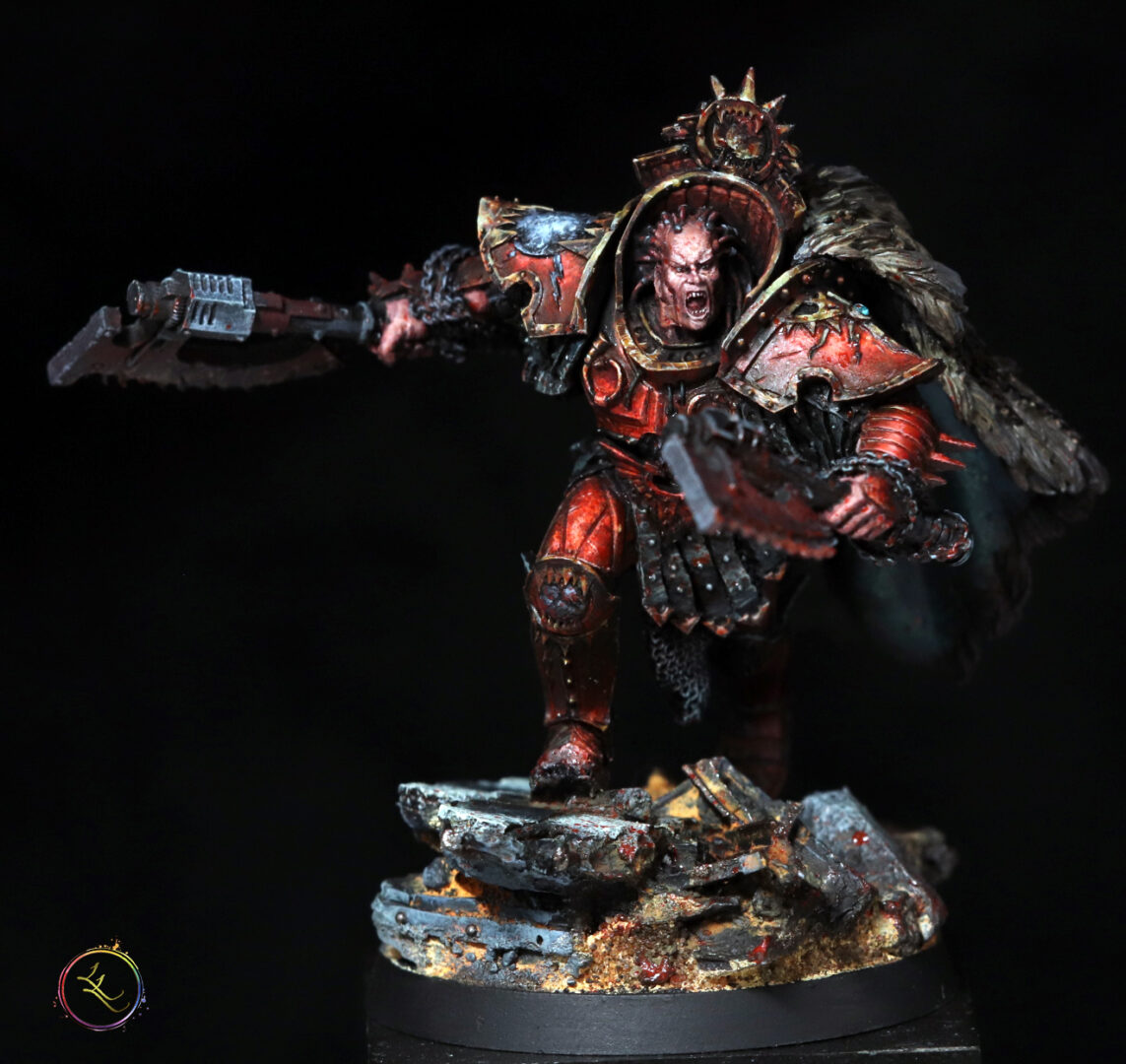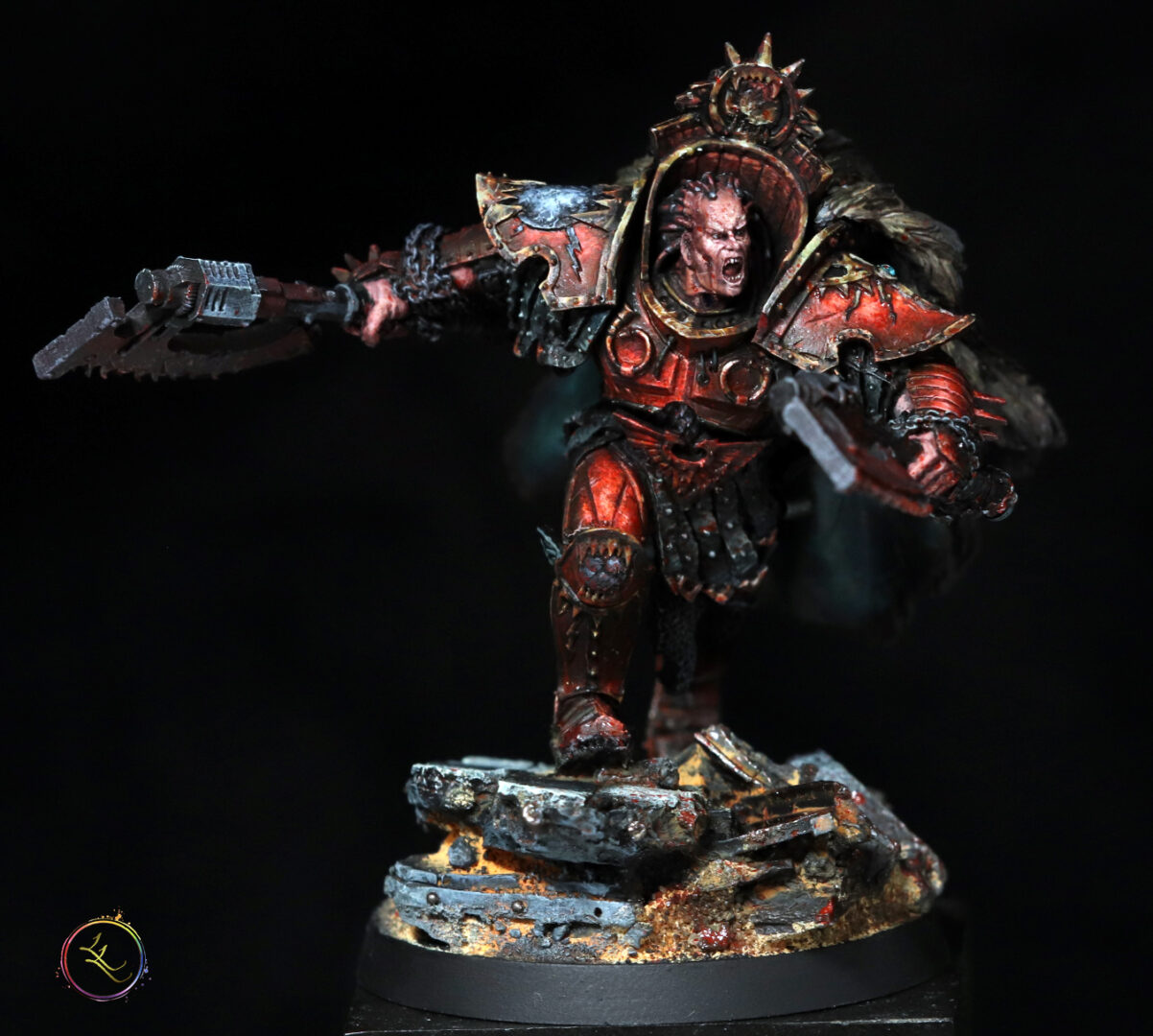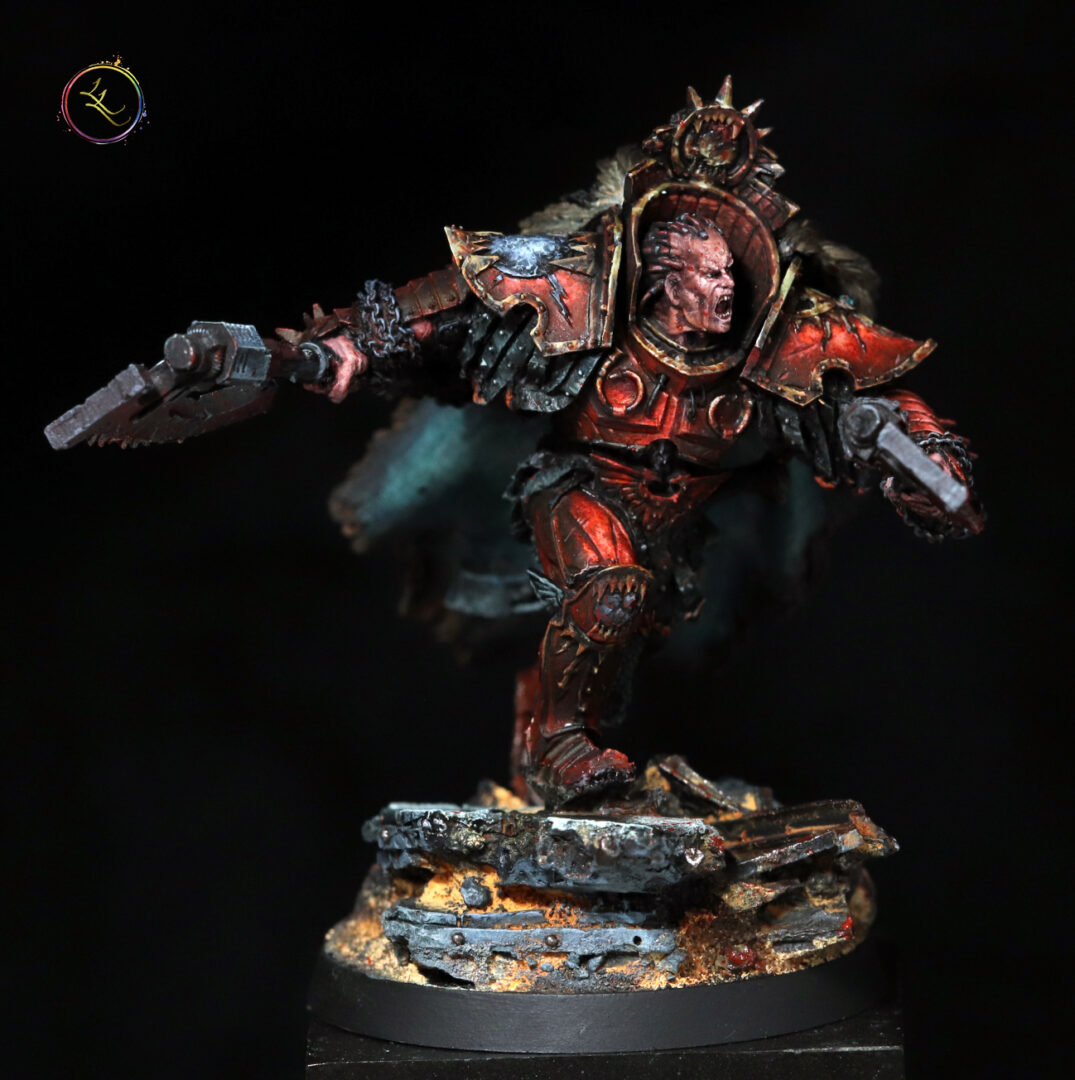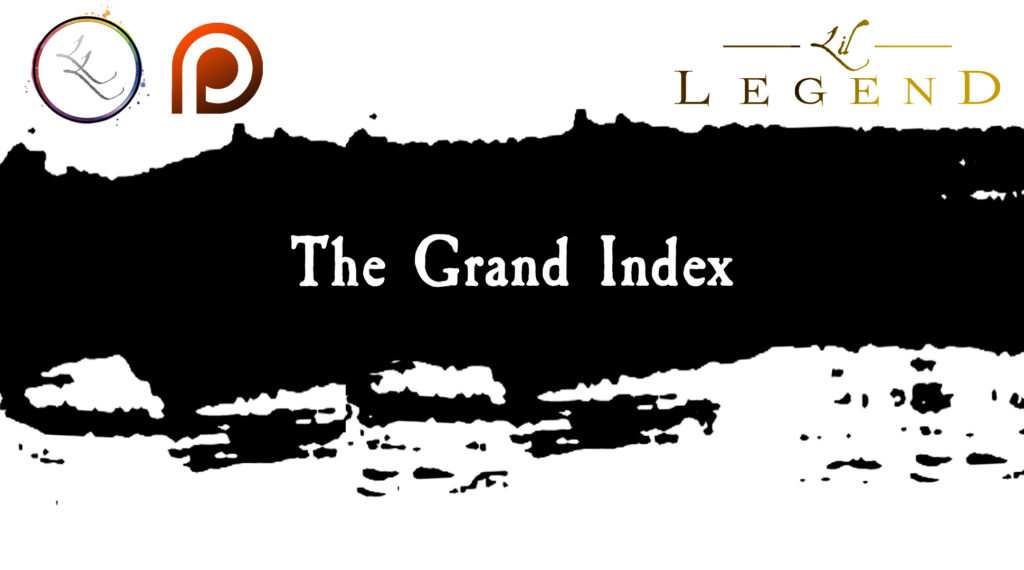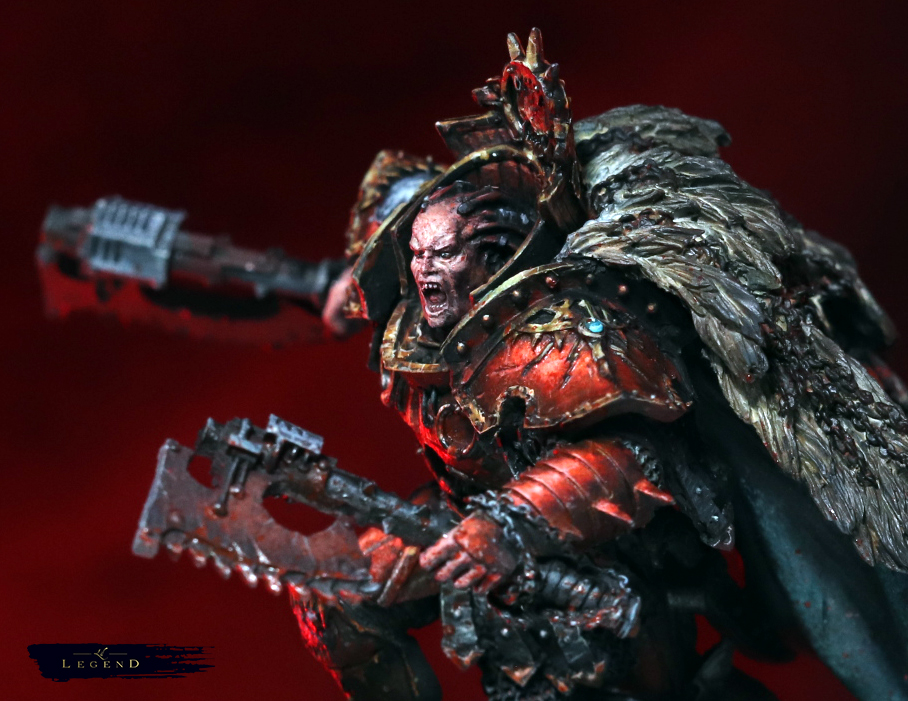
ANGRON THE RED ANGEL – HORUS HERESY PRIMARCH
Angron — The Red Angel
You can’t paint Angron clean!
He rejects polish, he does not do smooth blends. You need to hack and slash at this, wielding a brush like an axe!
When I began this piece, I knew the armour had to be red (because the client said so!). Not the bright parade colour you see on Legion banners, but a dirtier, older red — a red that’s seen dust, heat, ash, red that’s the accumulation of blood caked on armour.
Red is an awkward colour to work with, push it too far, and it turns cartoonish, or turns pink; hold back, and you end up with a mediorce paint job. Non-Metallic Metal gave me a level of control needed to paint this piece. It’s slightly older, and the details don’t translate as well as they once did in resin.
The NMM was built in thin, desaturated passes – the gold is lustreless. Deep oxides in the shadows, high, dusty pinks in the lights. The trick was to keep it matte enough in the mid tones to have a more satin finish in the shadows. When you catch it under the lamp, it should feel like something that’s been hot for too long, cooled, and hardened into memory.
The Flesh
The face took the longest. The sculpt is unreal— there are so many great details on it to explore. It’s a secret among miniature painters – that the better the sculpt, the less you have to work!
I kept thinking about Mickey Rourke in The Wrestler. That expression when he stops fighting, for just a second, and you see what’s left under the noise. And weridly, ground beef. Look at ground beef, maybe slap it up a few times, punch it – use that as a reference to paint Angron.
Working With the Ruin
With Angron, restraint is the challenge. You can’t overwork it. Every time I tried to “fix” a mistake, the life drained out. So I left things rough: brushmarks, small shifts, seams of texture that don’t blend.
That’s what the Primarch Masterclass explores — PAINTING THE RED ANGEL. Painting Angron is about knowing when to stop pretending the model is beautiful. You’ll see how the reds are layered to feel heavy, how the face holds too much colour and too little life, how light can be made to look tired.
And for those following on Patreon, the full process is there — step by step, from the first dull red glaze to the final cold highlight on his cheek. Not a recipe, but a record of the fight.
